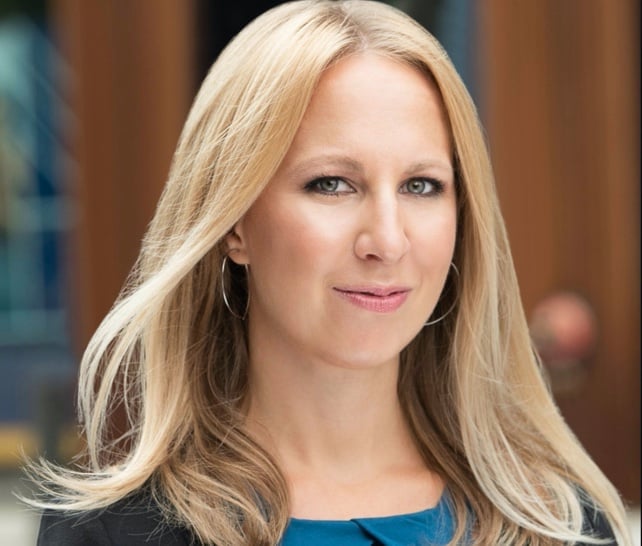Credit unions across the nation are grappling with the same workforce challenges as other industries, finding it increasingly difficult to attract and retain skilled employees. The current economic climate, coupled with evolving employee expectations, has intensified this struggle. However, credit unions possess a unique advantage in this battle: their deeply rooted commitment to community and social impact.
Today's workforce, particularly younger generations, seeks more than just a paycheck. They are drawn to organizations that align with their personal values and provide opportunities to make a meaningful difference. This desire for purpose-driven work is where credit unions can truly shine.
The purpose advantage
Research consistently demonstrates that employees who feel connected to their company's mission are more engaged, productive, and loyal. John Holt, CEO of Nutmeg State Financial Credit Union believes that people want to find purpose in their workplace. “Workers looking for purpose-driven work, especially younger folks, may be attracted to credit unions,” he says. “We have found that they really want to work for an organization with a purpose, with values that match their own.” With their inherent focus on serving members and communities, credit unions naturally embody this sense of purpose. By effectively communicating this mission-driven culture, credit unions have an opportunity to attract talent seeking more than just a job.
Employee giving programs: A multifaceted retention strategy
Employee giving programs go beyond simply cutting a check twice a year; they serve as a powerful tool to reinforce organizational values, boost employee morale, and foster a sense of shared purpose. Studies have shown a clear link between robust giving programs and reduced employee turnover. 90% of employees who work at companies committed to philanthropy say they are more inspired, motivated, and loyal.
Three strategies for impactful employee giving programs:
1. Volunteer time off (VTO): VTO empowers employees to donate their time and skills to causes they care about, all while remaining on the payroll. This not only benefits the community but also strengthens employees' connection to the credit union's mission. To create a successful VTO program, consider the following:
- Communication: Ensure all employees understand the genuine opportunity, its benefits, and how to participate. Many employees will be hesitant to take time if they feel there are implied repercussions for participating.
- Allow individual choice: Set parameters around what is considered an acceptable volunteer opportunity, and then empower your employees to do something meaningful for them.
- Manager buy-in: Encourage managers to actively support and promote employee participation.
By helping to strengthen your employees’ relationship with the community, you’re also helping to build brand equity; a great marketing opportunity!
2. Matching gift programs: By matching employee donations to charities, credit unions amplify their impact and demonstrate a deep commitment to social responsibility. Matching gifts signal to potential employees that the organization values each unique employee and where they want to give back to the community.
Matching gift programs offer a variety of benefits, including:
- Increased employee retention: When employees actively participate in company giving and volunteering efforts, employee turnover is reduced by 57%. Employees who participate in workplace volunteer programs are more likely to report that volunteerism boosts morale than company mixers or other bonding events.
- Improved reputation: Matching gift programs demonstrate a company's commitment to social responsibility, which can improve a company's public image. In a recent NetGiver study, 84% of consumers would think more highly of a company offering a donation matching program.
- Matching as a recruitment tool: Matching gift programs can be a key benefit for employees and an attractive draw for potential employees. Companies like Microsoft are learning from younger generations and using matching programs as a recruitment tool. 66% of Millennial and Gen Z employees will not take a job at a company with poor CSR (corporate social responsibility) practices.
3. Cultivating a thriving workplace: Your credit union likely is already giving back to the community in a number of ways. Consider going beyond Jeans Friday (asking employees to donate for a perk at work), and find ways of including your employees in the credit union’s philanthropy, which can help increase employee engagement and retention. When employees are included in their credit union’s charitable efforts, they feel more pride and are more likely to go above and beyond—regardless of their role or title. Here are some ways to engage employees in company philanthropy:
- Team volunteer projects: Get out, and roll up your sleeves together! Physically engaging in volunteer projects as a team helps build connections and rapport among employees.
- Celebrate achievements: Create impact reports, talk about individual and company giveback in newsletters and announcements, report your impact on CUSocialGood.com and share the news with your community so others can share in the pride.
- Involve employees: It may be obvious to state, but include your employees in decision-making processes around philanthropy. This creates a more participatory work environment, and your initiatives are more likely to succeed with employee buy-in from square one.
BONUS
4. Lead by example: Employees want to feel proud of not just the credit union they’re working for, but of the leaders at the credit union. Share what your leadership is doing, where they volunteer their personal time or donate money, and what the CEO, CFO, CLO care about and support. The younger demographic is more likely to be loyal to people who show humanity, kindness, and even a little vulnerability.
The ripple effect of purpose
By prioritizing purpose-driven initiatives, credit unions not only attract and retain top talent but simultaneously strengthen their bond with members and the broader community. Employees who feel valued and empowered to make a difference are more likely to provide exceptional service, leading to increased member satisfaction and loyalty. This, in turn, fuels the credit union's long-term success and sustainability. In the battle for top talent, credit unions have the opportunity to lean into the cooperative principle of “Concern for Community” and stand out as a covetable employer.







